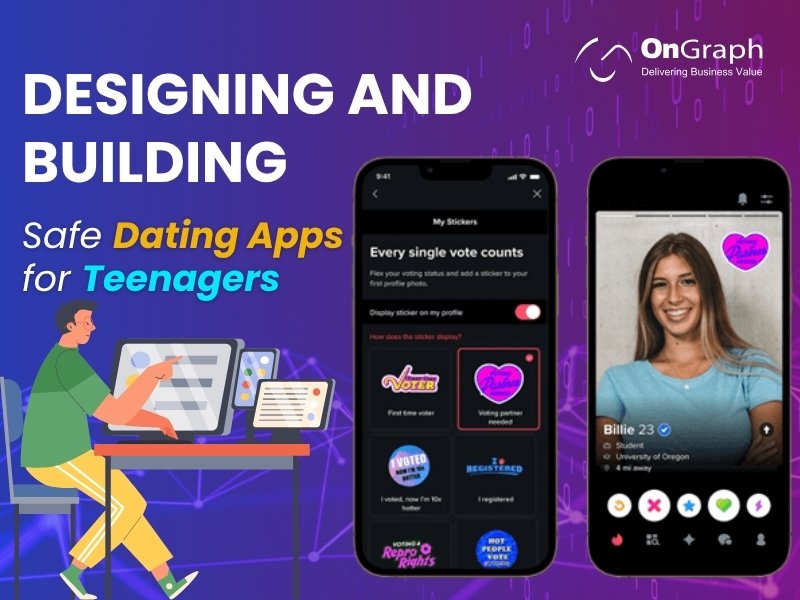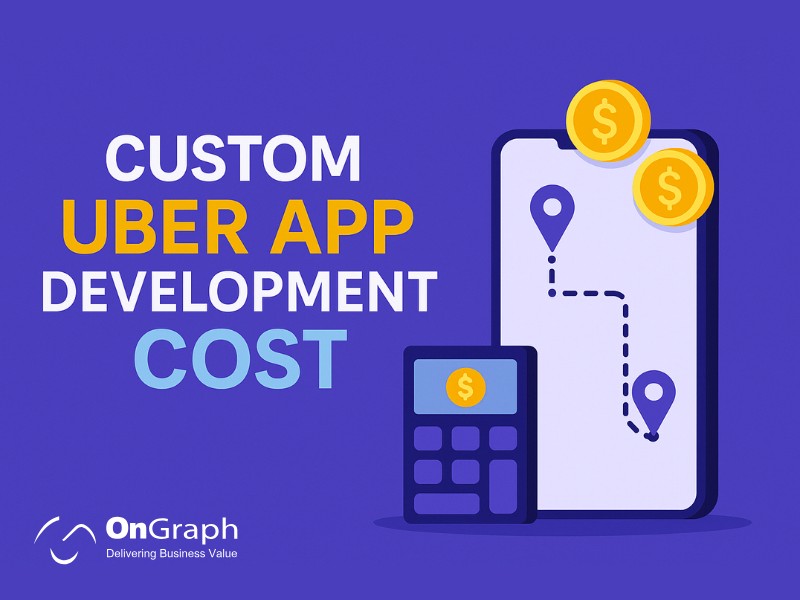In this article
- Understanding the Teen Dating Landscape
- Popular Dating Apps for Teenagers in 2025
- The Challenges & Ethical Considerations
- Look at Real Apps & Case Studies
- Core Features of a Teen Dating App
- How a White Label Dating App Development Company Can Help?
- How to Monetize Teen Dating Apps (Carefully)?
- Cost to Build a Dating App for Teens
- SEO / Growth & Launch Strategies
- Risks, Mitigations & Ethical Considerations
- Conclusion
The rising demand for dating apps for teenagers poses both opportunity and responsibility. As more teens seek online connections, developers must deliver safe, compliant, and engaging apps.
This article dives into trends, risks, feature blueprints, case studies, and design principles. We also show how a White Label Dating App Development Company like ours can assist you to build a dating app for teens responsibly.
Understanding the Teen Dating Landscape
1- Teen usage & statistics
- A recent Northwestern Medicine study found that nearly one in four teenagers has used dating apps.
- Among early adolescents (mean age ~12), only ~0.4% reported ever using a dating app.
- However, usage increases sharply in mid-teen years, especially in communities where social opportunities are limited.
- The global dating app industry revenue is projected to reach $13.1B in 2025 at ~8.9% CAGR.
- Of the overall dating app user base (~350 million globally), younger users form a core segment.
These numbers suggest cautious potential: only a subset of teens will use dating apps, but the market is large and growing.
2- Motivations & risk perceptions
- Teens often use dating apps for social validation, identity exploration, and peer connection rather than serious relationships.
- Some research warns of online victimization and psychosocial distress tied to teen dating app use.
- Others argue that moderated and safe platforms can provide support, especially for marginalized youths (e.g., LGBTQ+).
- Safety and trust are top demands. Apps must be engineered with protective layers, not just features added later.
Popular Dating Apps for Teenagers in 2025
While adult apps like Tinder, Bumble, and Hinge are restricted to 18+, several platforms cater safely to younger audiences. Below are some dating apps for teenagers widely discussed in 2025:
| App | Description | Age Range | Key Features |
| Yubo | Social discovery app for 13–17 and 18+ separately | 13–17 | Age verification, video streaming, moderation tools |
| Spotafriend | “Swipe-to-meet” app for teens | 13–19 | No adult users, friend-based connections, verified sign-up |
| Teen Dating Site (TDS) | Web-based friendship and dating for youth | 16–19 | Profile moderation, chat rooms, verified access |
| Skout (Teen mode) | Mixed-age app with restricted teen mode | 13–17 | Location filters, content moderation |
| MyLOL | One of the oldest teen-oriented platforms | 13–19 | Profile checks, image moderation, chat filtering |
The Challenges & Ethical Considerations
Building the best dating apps for teens demands addressing unique issues beyond traditional adult dating apps.
1- Legal & compliance
- Age verification is legally required (e.g., COPPA in the U.S., GDPR constraints in EU).
- Parental consent or oversight may be mandated in some jurisdictions for under-18s.
- Data privacy laws are stricter for minors: minimal data retention, anonymization, and strong controls are essential.
2- Safety & abuse prevention
- Teens are vulnerable to grooming, fake accounts, harassment, and exposure to inappropriate content.
- Some studies find mainstream apps lack interventions to disable location tracking or enforce identity verification.
- Effective features include real-time moderation, abuse reporting, content filtering, and communication limits.
3- UX & engagement constraints
- Younger users may be less tolerant of friction, so verification flows must be smooth.
- Interfaces should be intuitive, friendly, and age-appropriate (avoid overly sexual or mature UI).
- Parental or guardian involvement (optional oversight) must balance safety and privacy.
4- Inclusivity & accessibility
- Teen users may include neurodiverse individuals (e.g., autistic teens). So design must support dating apps for autistic teens: adjustable settings, clear UI cues, guided prompts for social interaction.
- Accessibility features (text size, alt text, contrast) are more critical in younger demographics.
Look at Real Apps & Case Studies
1- Yubo — “Tinder for Teens”
Yubo is often cited as a teen-friendly social matching app, sometimes labeled “Tinder for Teens.”
- It splits versions for 13–17 and 18+ users.
- Implements age estimation, proactive moderation, banning explicit content.
- Yet controversies remain — issues around underage enforcement, grooming, and content moderation have been reported.
Yubo’s approach shows both promise and pitfalls: verifying age but still dealing with misuse.
2- Safety interventions in adult apps — learnings
A study comparing Tinder and Bumble’s safety tools found gaps in location disabling, verification, and abuse controls.
Designers recommended adding features like privacy toggles, automatic content filters, and identity tools to reduce abuse risk.
These lessons apply to teen apps: robust moderation, graduated exposure, and privacy defaults are mandatory.
Core Features of a Teen Dating App
When you decide to build a dating app like Tinder but for teens, these are essential features to include.
1- Age verification & onboarding
- Use identity checks (government ID, selfie + liveness).
- Use age estimation algorithms and human moderation.
- Require proof or consent if minors, based on jurisdiction.
2- Safe matching algorithm & filters
- Limit matches by age bands (e.g. within 2–3 year difference).
- Enforce location radius constraints (e.g. “local only”).
- Allow geofencing to restrict matches to safe zones (e.g. neighborhoods, schools).
3- Communication controls
- Start with limited chat (e.g. text only, no media until proven trust).
- Use prompt templates or icebreaker questions to guide safe interaction.
- Rate limit messages, prevent spamming or harassment.
4- Safety & reporting
- One-click “report” and block options.
- Real-time content scanning for nudity or harassment.
- Safety reminders, periodic check-ins, “pause chat” option.
5- Parental oversight or consent (optional)
- A controlled dashboard for parents or guardians.
- Alerting for dangerous content, but careful about privacy vs over-monitoring.
- Co-supervision models in research have mixed reception. arXiv
6- Inclusive modes
- Settings for dating apps for autistic teens: clear instructions, optional delays before replies, minimal UI distractions.
- Support for LGBTQ+ teens, with identity options, safe spaces, and reporting.
7- Analytics, monetization & moderation tools
- Admin dashboard: user counts, subscriptions, flagged reports, growth metrics.
- Monetization: safe premium features (custom filters, boosts) — but avoid paywalls on safety.
- Moderation backend: automatic flagging, human review queue, escalation paths.
How a White Label Dating App Development Company Can Help?
At OnGraph, as a White Label Dating App Development Company, we have experience in building robust and compliant apps. Here’s how we can assist:
- Prebuilt feature modules — identity verification, moderation flows, safety modules.
- Customizable UI templates tailored for teen audiences.
- Compliance support — privacy, data retention, and consent flows.
- Scalable backend architecture — geolocation, matching algorithms, moderation pipelines.
- Ongoing support & updates — we stay abreast of new safety rules, and maintain your app’s trustworthiness.
With such a partnership, you can launch a teen dating app more quickly and with greater trust.
Build the Next Generation of Safe Teen Dating Apps—Get It Right from Day One
How to Monetize Teen Dating Apps (Carefully)?
Monetization must not compromise safety or trust. Here are permissible revenue ideas:
- Freemium upgrades — e.g., more filters, profile boosts, peek features (within safe limits).
- Ad support (age-appropriate) — non-intrusive, carefully curated.
- Premium themes or avatar packs (nonsexual)
- Virtual gifts — with strict content moderation
- Event partnerships — safe, teen-friendly online meetups or virtual social events.
Avoid gating critical safety or verification behind paywalls.
Cost to Build a Dating App for Teens
Estimating cost to build a dating app like Tinder for teens involves variables: design, backend infrastructure, moderation, compliance. A ballpark range (for a mature MVP) might be USD 50,000 to 150,000+ depending on region, features, and moderation scale.
Factors influencing cost:
- Identity verification integrations (API costs)
- Geolocation & radius matching engine
- Real-time moderation & content scanning
- UX design for teen flows
- Parental oversight modules
- Scalability, security, and compliance
- Maintenance, updates, and content moderation staffing
A White Label Dating App Development Company can reduce cost via reusable modules, but complexity of safety adds to costs.
SEO / Growth & Launch Strategies
- Use seed topic “dating apps for teenagers” in blog, landing pages, and FAQs.
- Build blog content around related queries: “best dating apps for teens”, “dating app for teens safety”.
- Create guided on-boarding content (videos, help docs) to reduce trust barriers.
- Partner with schools, counselors or youth organizations for adoption.
- Leverage influencers or teen communities under strict moderation.
- Continuously iterate safety features from user feedback and audit logs.
Risks, Mitigations & Ethical Considerations
| Risk | Mitigation |
| Fake accounts, bots | Strong identity verification + human review |
| Grooming & exploitation | Age band matching, content filters, rapid reporting |
| Data leaks | Encryption, minimal retention, anonymization |
| Legal violations | Local compliance review per country |
| Over-monitoring by guardians | Consent models, optional oversight, privacy controls |
Conclusion
The space of dating apps for teenagers is nascent but critical. Success demands building trust, safety, and compliance from day one.
As a White Label Dating App Development Company, we bring reusable modules, design best practices, and regulatory know-how to help you build a dating app for teens that balances engagement and guarding.
If you’re ready to move deeper, I can help you draft technical architecture, UI flows, or regulatory checklists.
FAQs
Yes, if they comply with local data protection laws. Apps must verify users’ ages, obtain parental consent (if required), and prevent adult access.
They use age verification, content filters, reporting systems, and AI tools for monitoring chats. Data encryption and moderation are crucial.
An MVP version ranges from $55,000 to $100,000+ depending on features, compliance, and backend scalability.
Such apps use simple interfaces, clear instructions, slower chat pacing, and structured prompts to support comfortable communication.
Through optional upgrades, limited ads, and non-monetary engagement (like events or digital gifts), avoiding exploitation of minors.
It reduces cost, ensures faster deployment, integrates proven safety modules, and keeps your app legally compliant from day one.
About the Author
Let’s Create Something Great Together!
Latest Blog
















